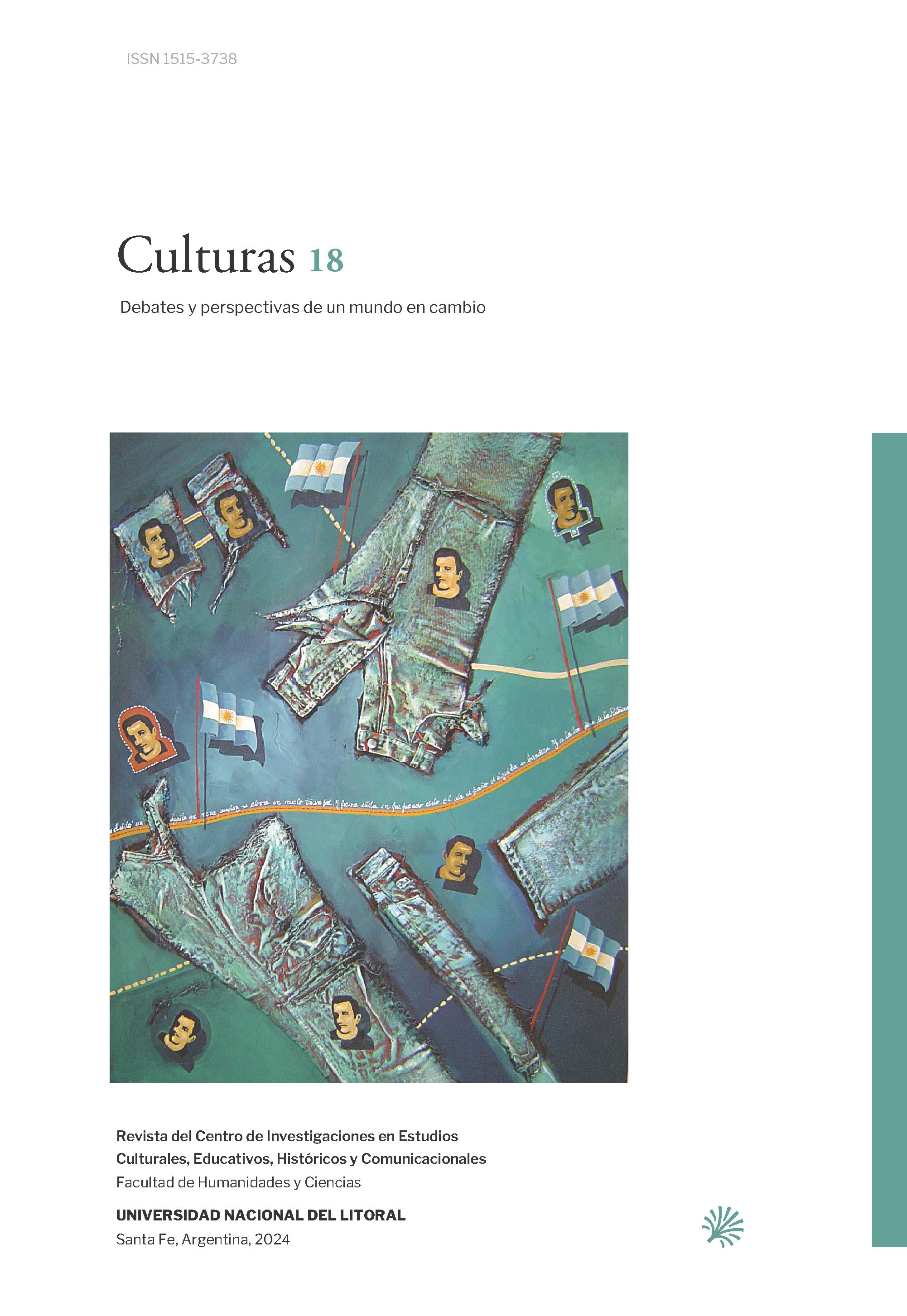El cine queer brasileño y la desestabilización de la masculinidad hegemónica en los grandes centros urbanos
Un análisis de las películas Tinta bruta y Cuerpo eléctrico
DOI:
https://doi.org/10.14409/culturas.2024.18.e0049Palabras clave:
narrativa, ciudad, espacio, homosexualidad, masculinidadResumen
Este artículo consiste en un análisis de la ciudad como espacio público que permite comprender las tensiones que la homosexualidad provoca a la masculinidad hegemónica, a través de los largometrajes Tinta Bruta (2018) y Cuerpo Eléctrico (2017). Se adoptará como metodología el análisis cinematográfico (Aumont y Marie, 2004) y la atención de este trabajo se centrará en la narrativa de las escenas en las cuales se desarrollan fiestas en la calle. Las discusiones acerca de la construcción del espacio fílmico se basarán en el pensamiento de Bordwell (1995), Gaudreault y Jost (2009) y Costa (2013a y 2013b). El concepto de masculinidad hegemónica tendrá como referencia Connel y Messerschmidt (2013). Para comprender la historia de las demandas de derechos por parte de grupos minoritarios con sexualidades disidentes, así como la relación entre los grandes centros urbanos y la trayectoria de tales luchas políticas, este artículo presentará como base teórica los trabajos de Lacerda (2015), Lacerda Júnior (2015), Nagime (2016), Lopes (2016), Louro (2018), Galuppo (2019), Ramalho (2020), Quinalha (2022) y Halberstam (2023). Como resultado, fue posible comprender que el cine queer plantea provocaciones y cuestionamientos a paradigmas hegemónicos y, a través de narrativas que se distancian de una búsqueda de asimilación, las películas analizadas retratan posibilidades de reinventar ciudades. La presencia de los protagonistas de ambas obras, en fiestas a las que asisten individuos heterosexuales, pone en tensión prejuicios y desestabilizan la búsqueda de dominación por parte de personajes masculinos heterosexuales. La ciudad, sin embargo, también es retratada en las películas como un espacio público donde la pluralidad y las nuevas formas de ser y entender el mundo encuentran formas de resistir y vivir las diferencias con orgullo.









